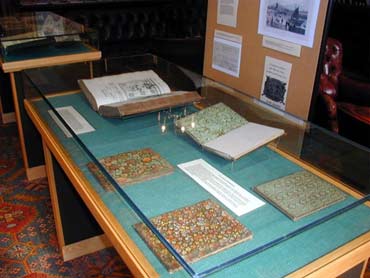
Four examples of Dutch gilt papers.
Despite their names these decorative papers were produced in Germany and Italy in the eighteenth century. 'Dutch' is probably a corruption of Deutsch, or else a reference to the trade routes by which they arrived in France and England.
They were made by transferring size onto paper with wooden plates or engraved rollers. When the paste had dried to the correct consistency, gold was dusted on, and when the size was dry, the superfluous gold was brushed off.
The gold was raised by thickening it with yellow ochre or red lead. The method of colouring is unknown, but it may have been done by dabbing or stencilling.
From the sixteenth century onwards techniques in craft making had been spread around Europe by refugees dispersed by the many wars. Dutch gilt papers were made in imitation of the brocades and damasks of the period and used for covering pamphlets and chapbooks.